RARE! WWII 1943 Battle for Heldsbach New Guinea Campaign 8th Photo Reconnaissance Squadron (5th Air Force) Heavily Used Combat Aerial Photo Map

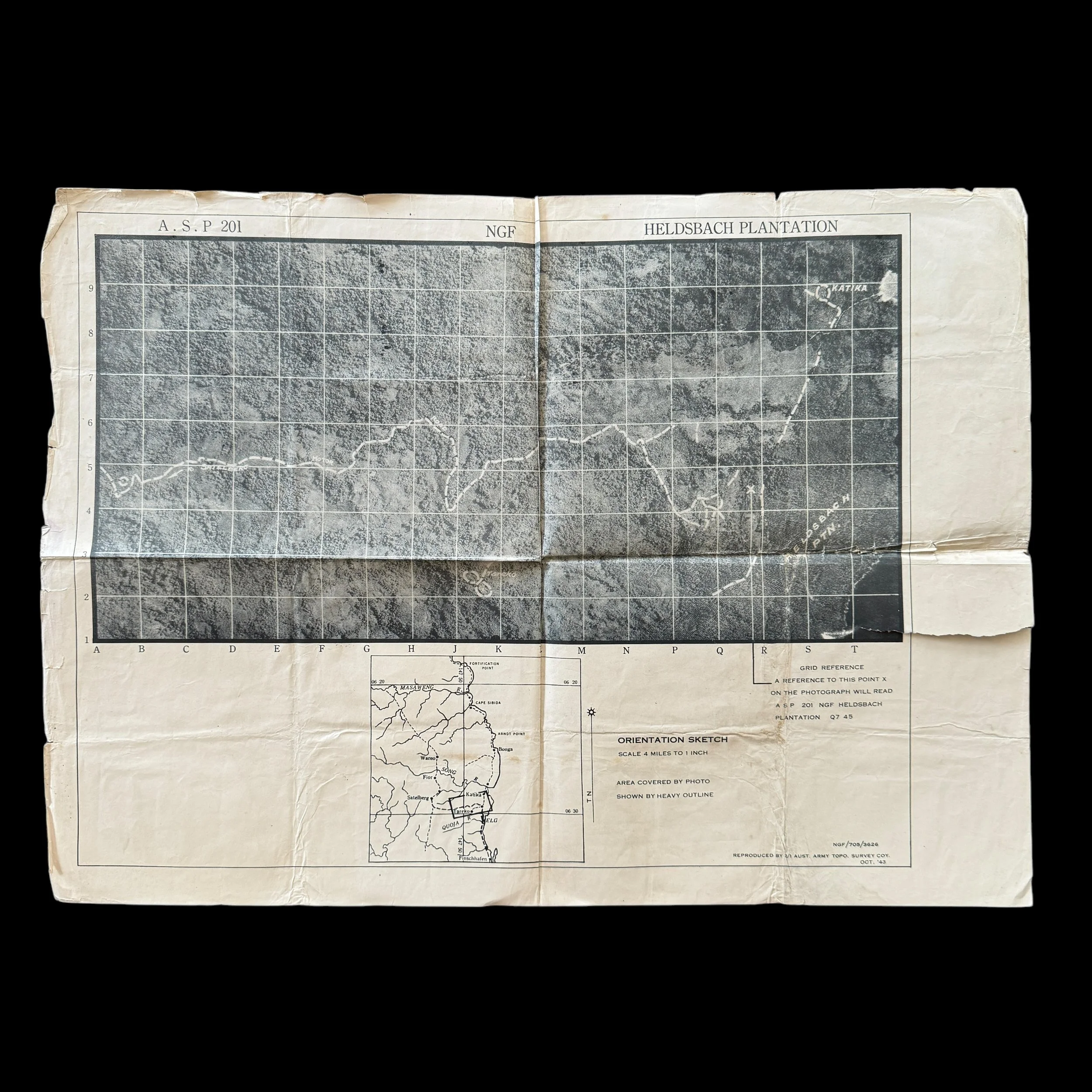
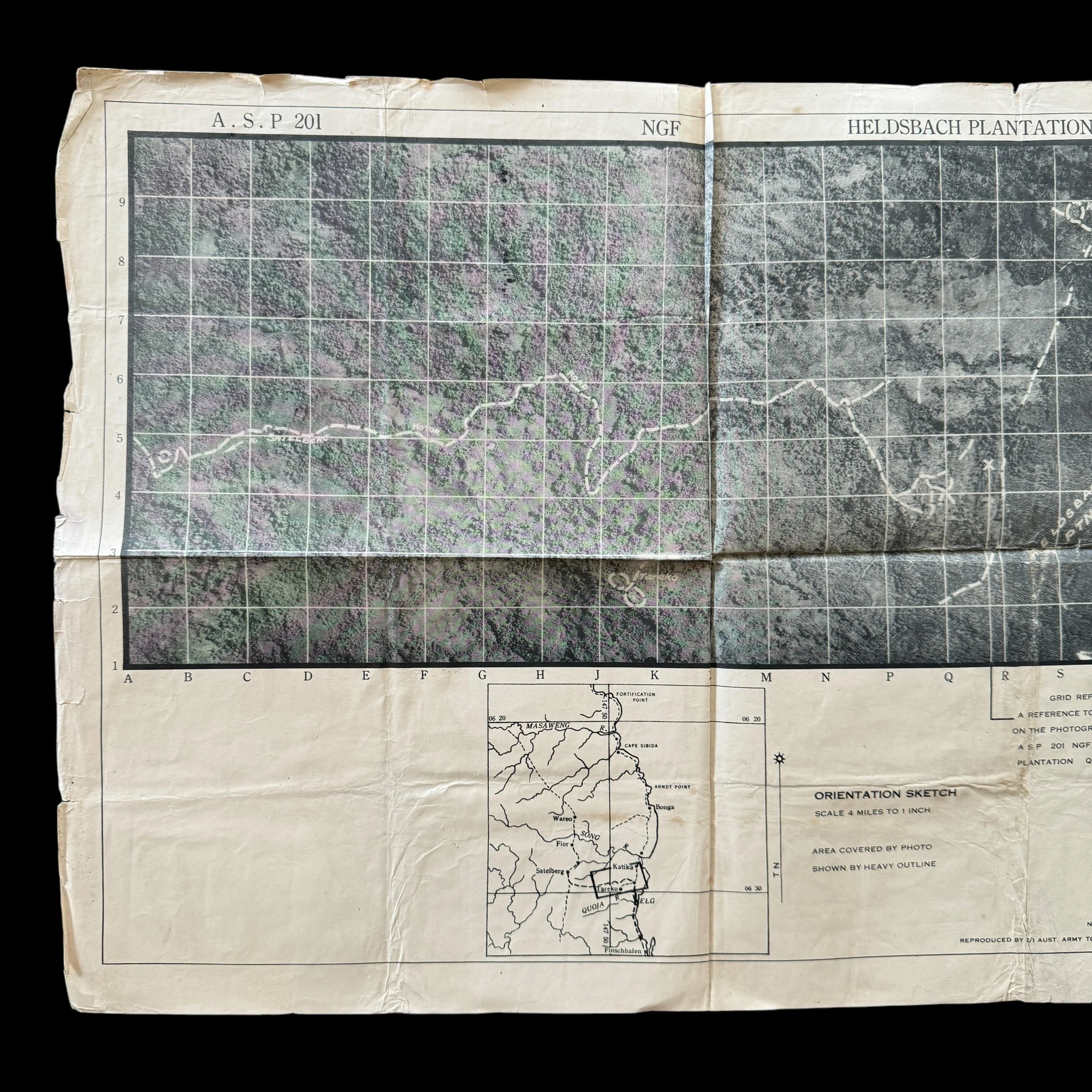
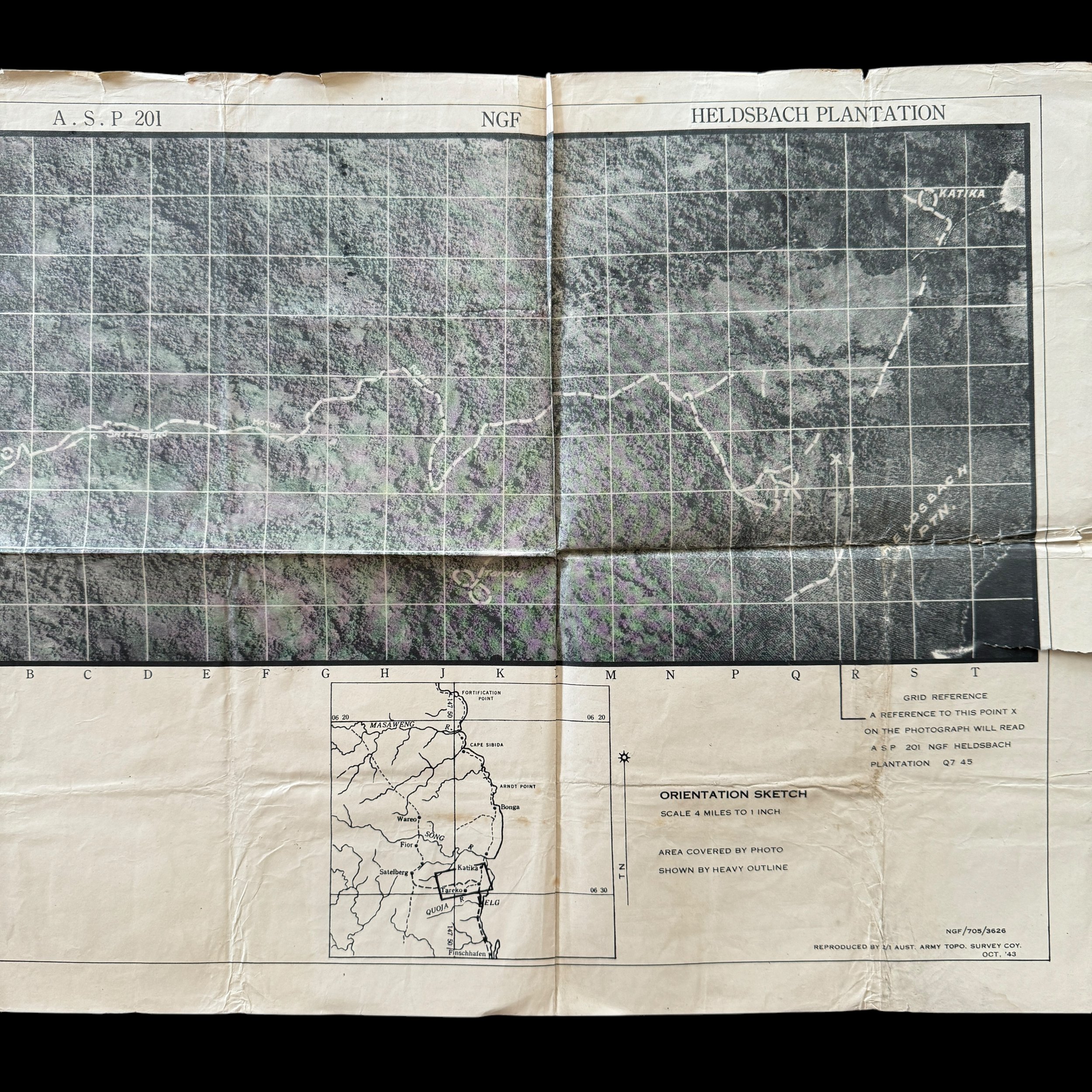
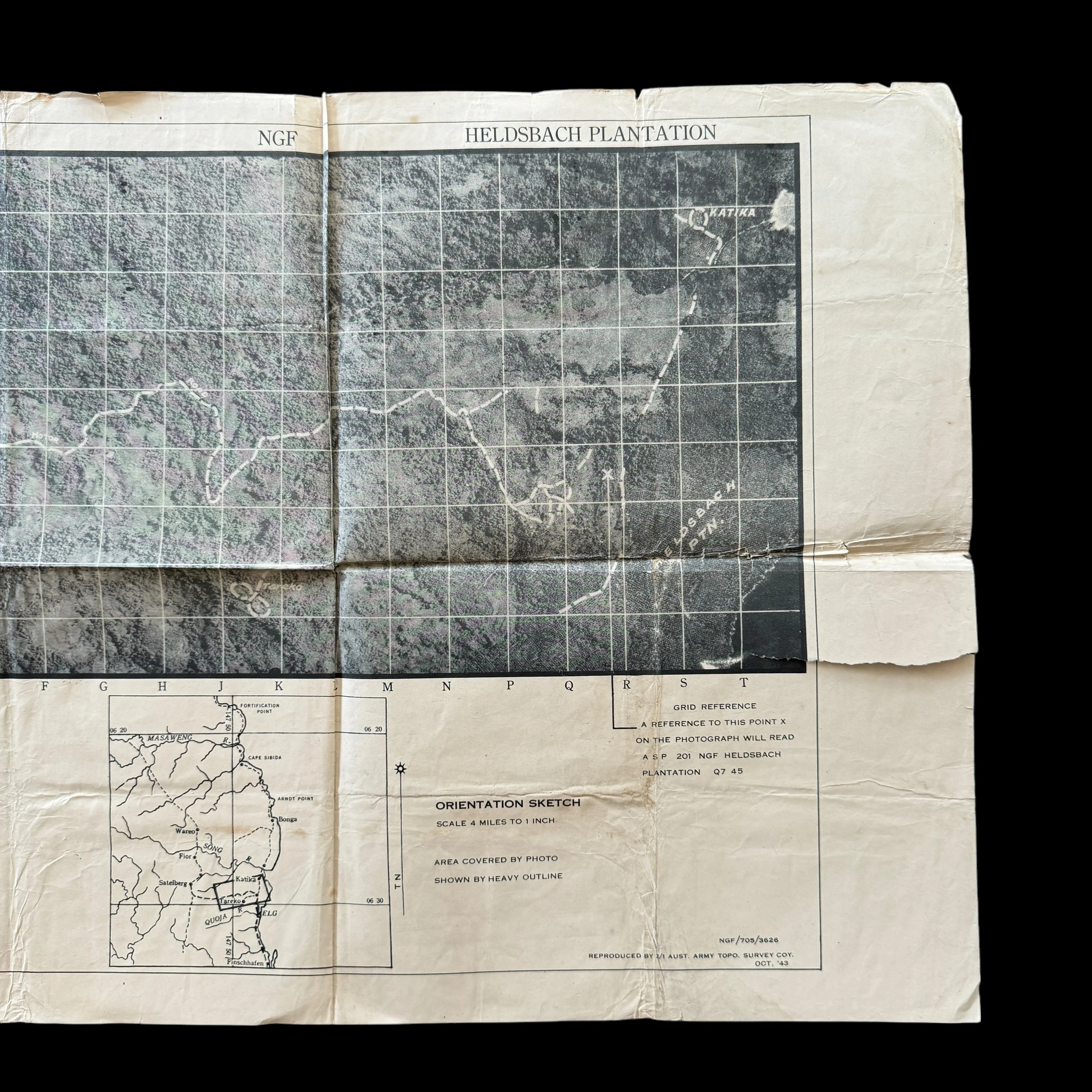

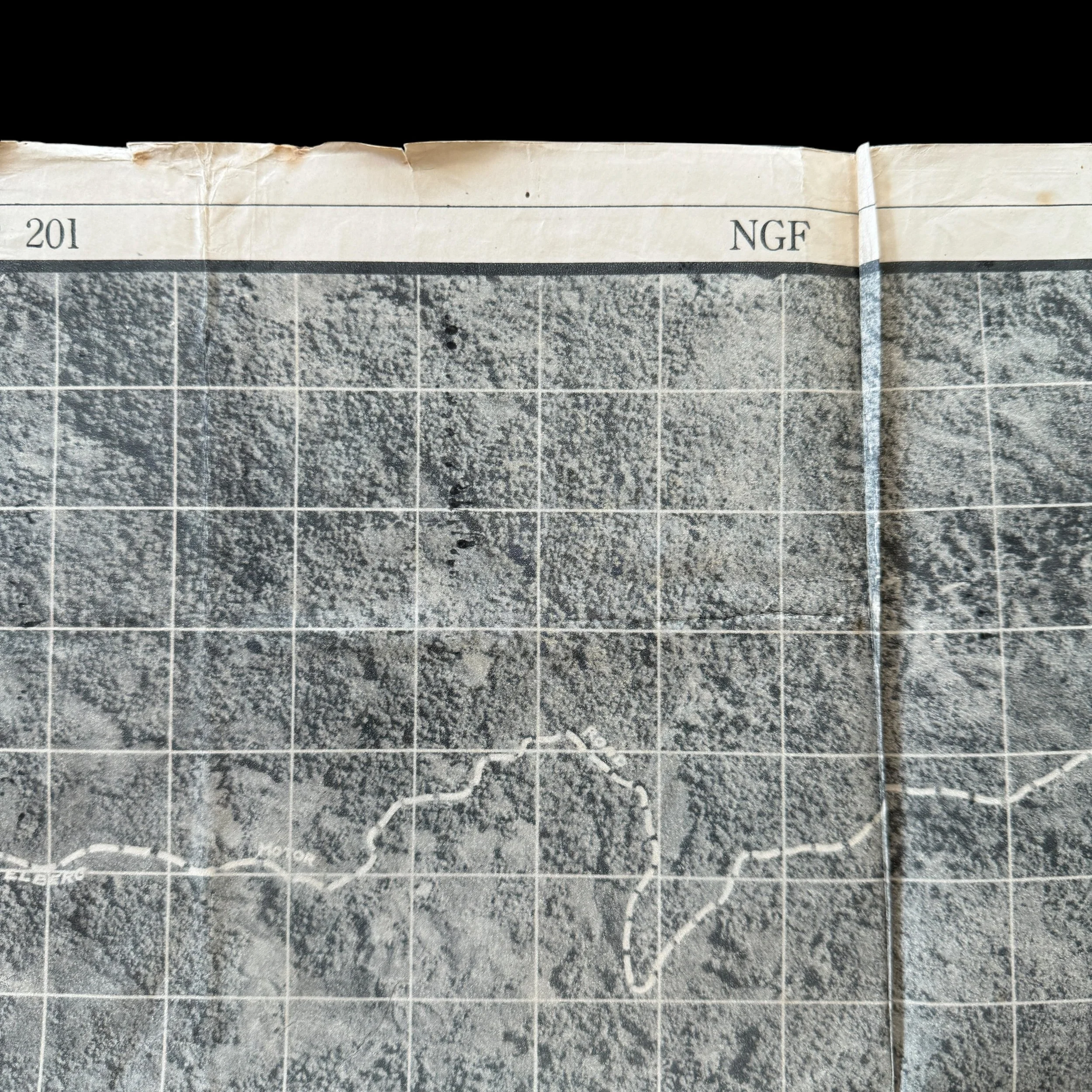
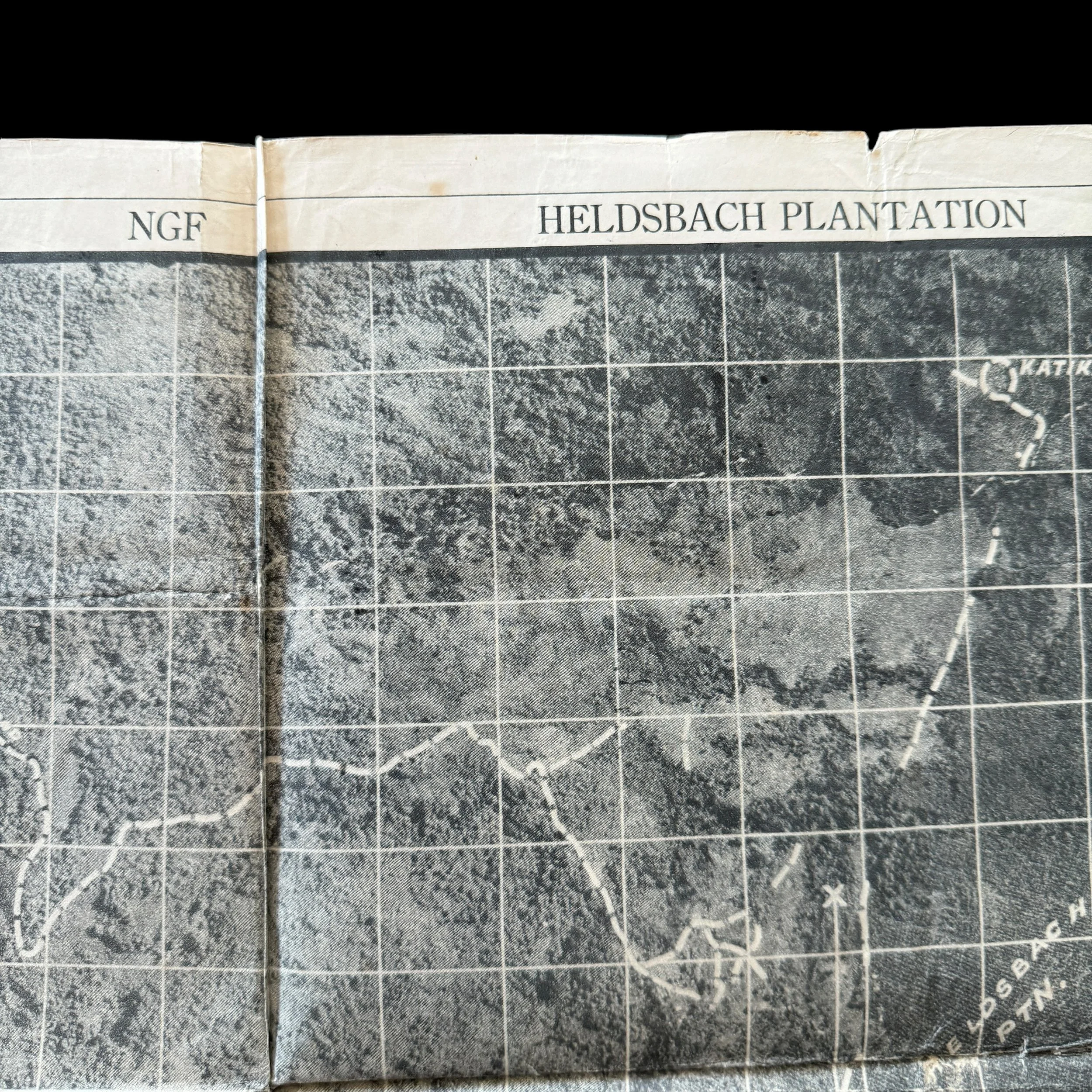
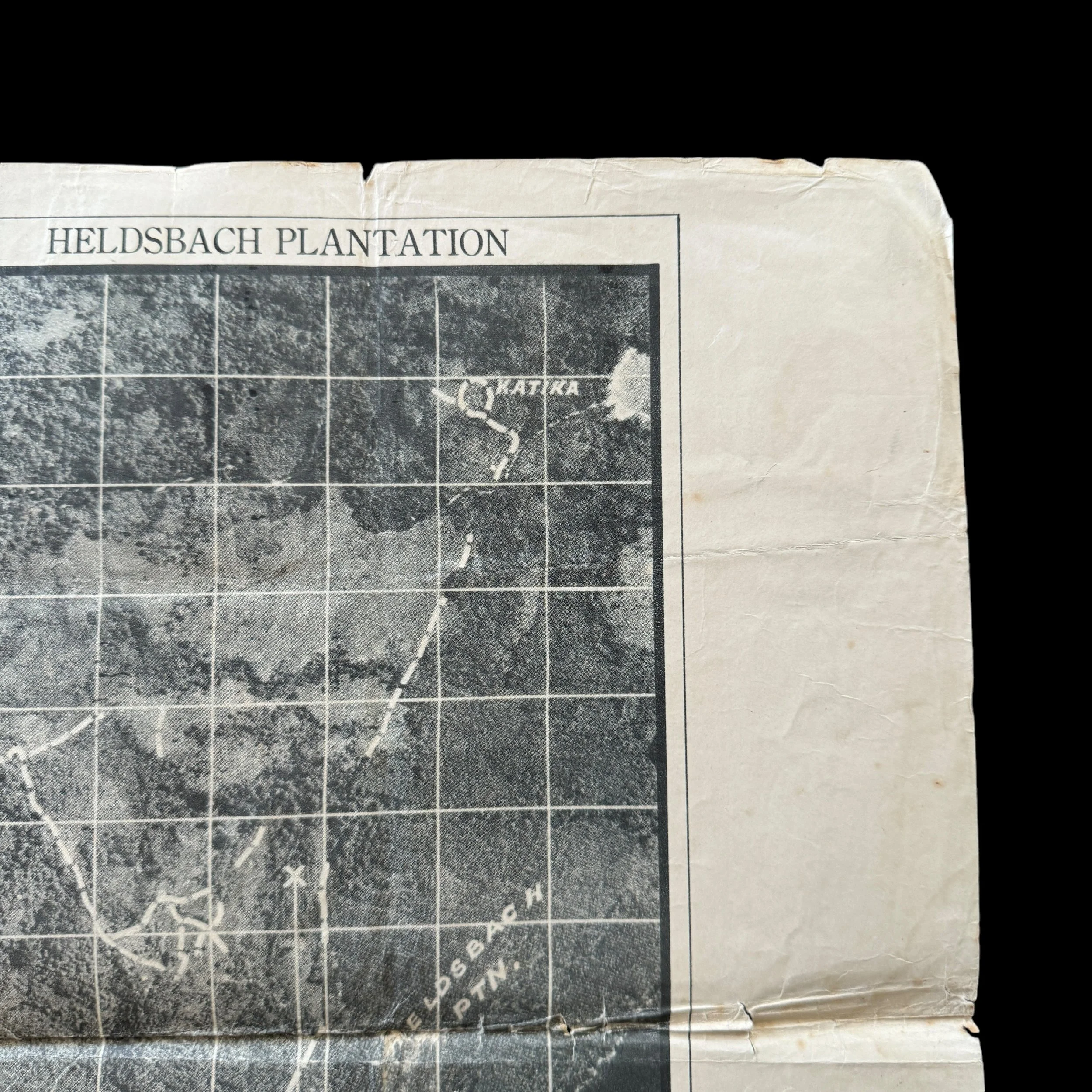

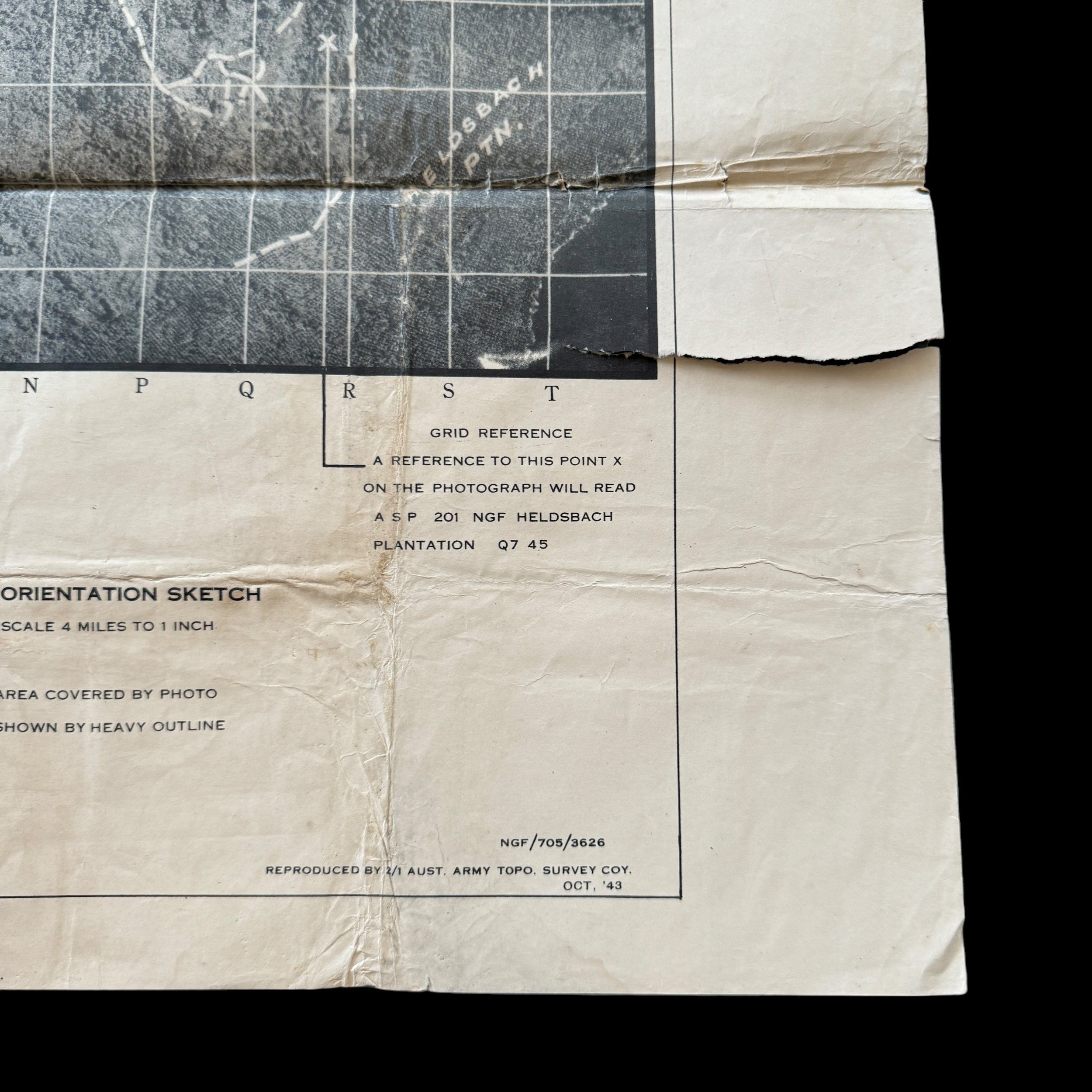
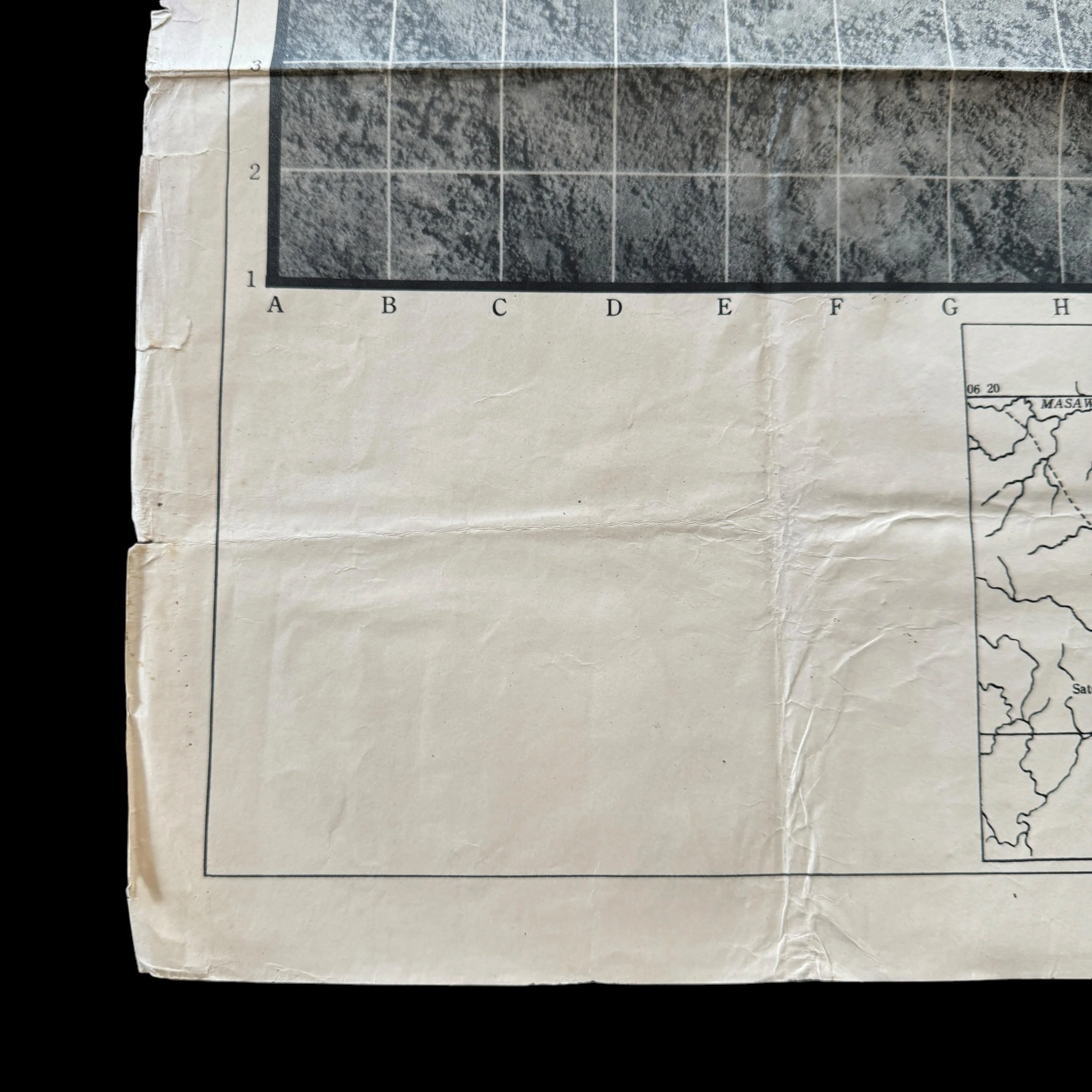
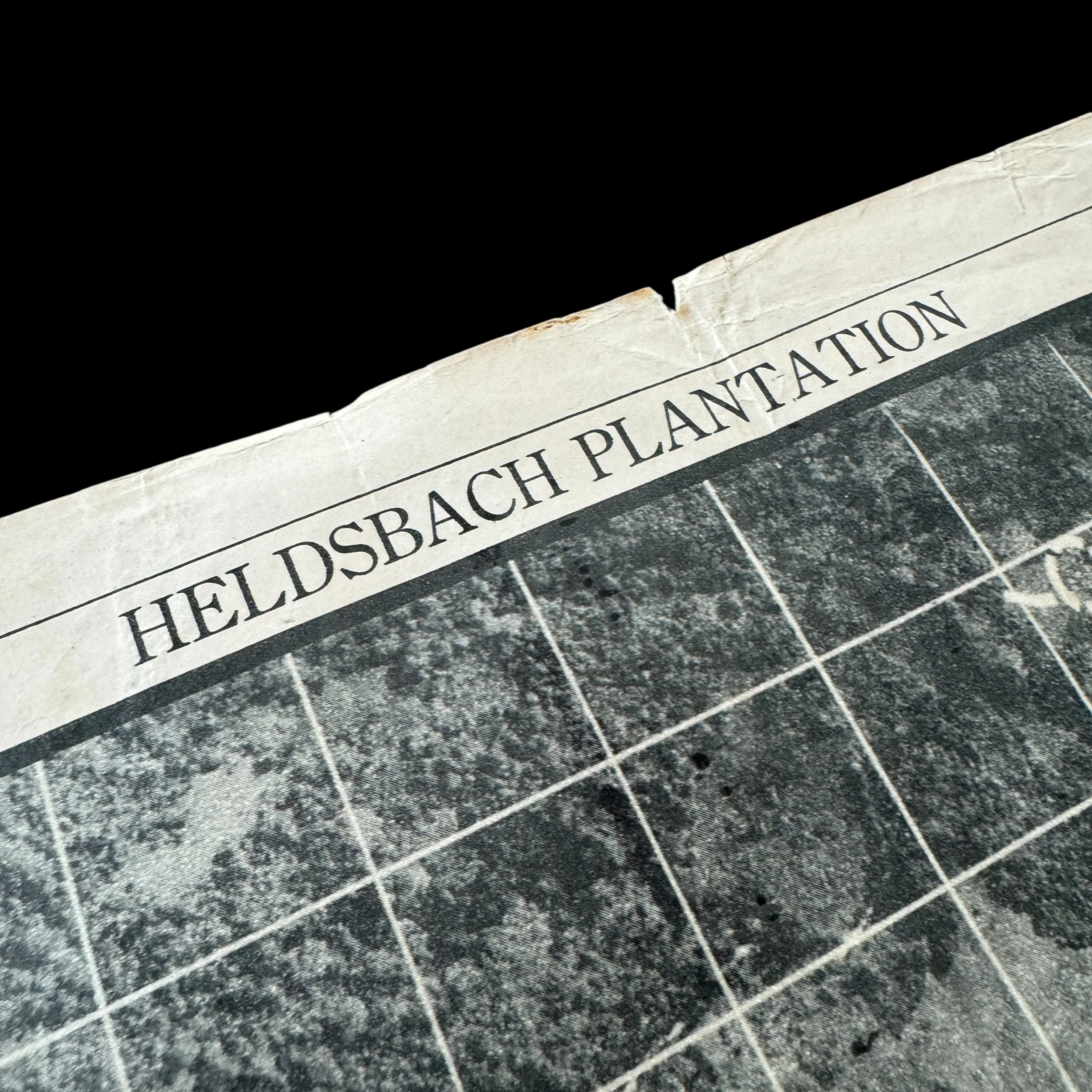
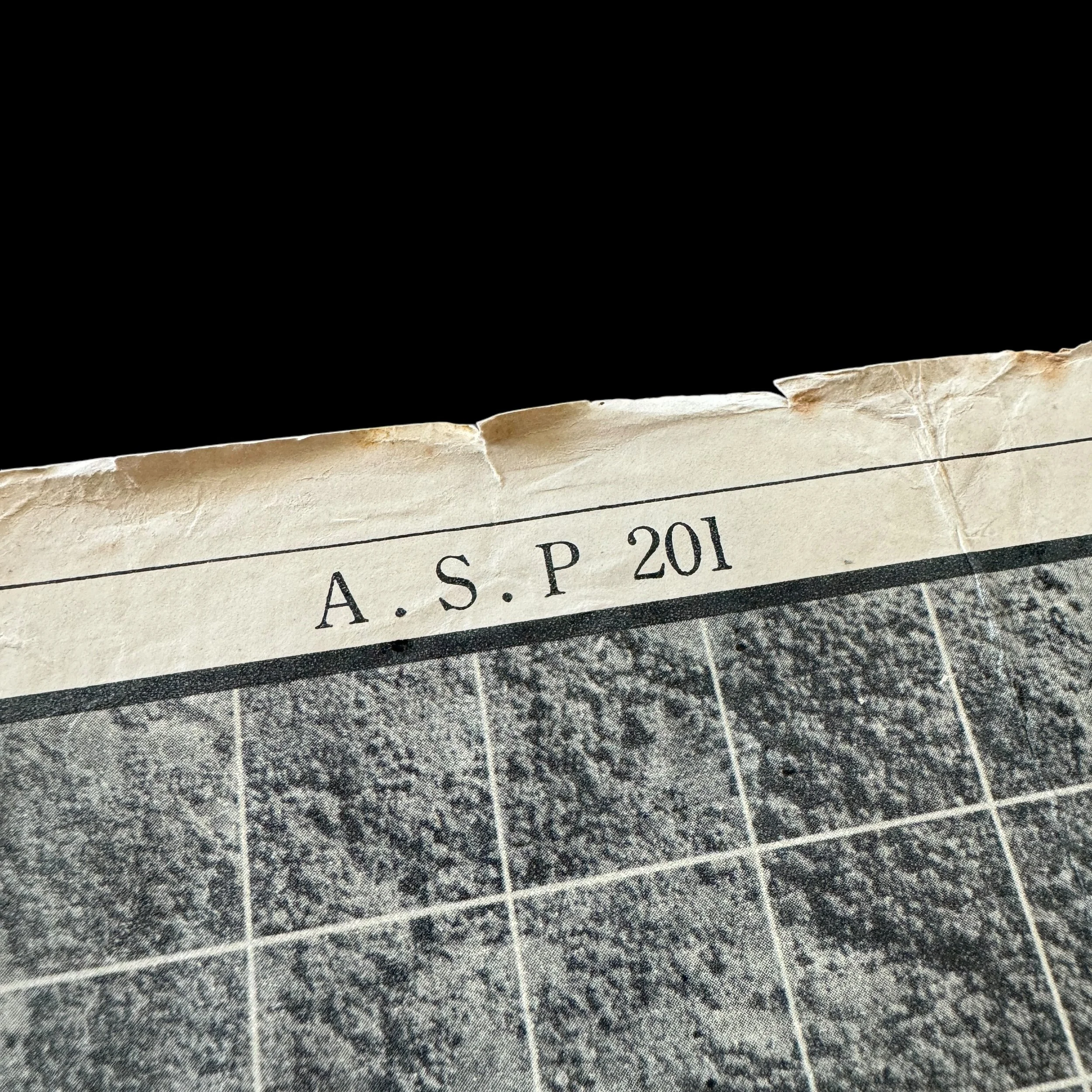






RARE! WWII 1943 Battle for Heldsbach New Guinea Campaign 8th Photo Reconnaissance Squadron (5th Air Force) Heavily Used Combat Aerial Photo Map
Comes with a hand-signed C.O.A.
*This New Guinea combat map is a part of a larger 8th Photo Recon Squadron bring-back collection of TYPE-ONE mission photographs (the same used to make these combat maps) as well as original Allied combat maps used during the New Guinea campaign.
Size: 16 × 22 inches
This extremely rare and museum-grade Pacific Theater WWII artifact is an original 1943 dated and heavily combat-used New Guinea photomap that was created using aerial photo reconnaissance mission photographs by the infamous 5th Air Force - 8th Photo Reconnaissance Squadron (Eight Ballers).
The 8th PRS, also known as the 8th Photo Reconnaissance Squadron, earned a renowned reputation for its exceptional service during campaigns across various regions including the East Indies, Japan, China, Papua, Guadalcanal, New Guinea, Northern Solomons, and Bismarck.
The 8th Photographic Reconnaissance Squadron (8th PRS) operated under the U.S. Army Air Force (USAAF), specifically part of the 5th Air Force and the 6th Photographic Reconnaissance Group (6th PRG). Referred to as the 8th Photographic Squadron, 8th Photo Recon Squadron, or 8th Photo Recon, the unit was initially outfitted with the F-4 Lightning, a specialized photographic reconnaissance variant of the P-38 Lightning. Camera equipment was installed in the nose section in lieu of traditional armaments. Conducting missions above Japanese-held territories and airfields, the squadron captured vital imagery utilized in the creation of aerial maps and target intelligence for subsequent combat operations. These reconnaissance flights were inherently perilous, with pilots often flying solitary missions through adverse weather conditions and challenging navigation circumstances. While over target areas, pilots maintained a steady flight path at lower altitudes to ensure high-quality photographic results, braving risks such as anti-aircraft artillery and potential interception by enemy planes. In later operations, F-4s received protective escort by armed P-38 Lightnings to enhance their defensive capabilities.
________________
Heldsbach Plantation: Strategic and Tactical Significance
Located on the northeastern coast of New Guinea, the Heldsbach Plantation was an essential tactical point for both Japanese and Allied forces due to its proximity to major coastal routes and airfields. Originally a German plantation, it had been overtaken by the Japanese, who fortified the area, turning the site into a defensive stronghold. The plantation’s location allowed Japanese forces to control access to nearby regions, effectively blocking Allied movements and challenging Australian and American supply lines.
In the later stages of the campaign, the Allies saw Heldsbach Plantation as a critical objective, crucial for clearing Japanese forces from northern New Guinea and securing a route toward the Philippines. The battle for Heldsbach was marked by fierce, close-quarter combat, where dense jungle, swamps, and undergrowth made it difficult for either side to maneuver freely. Australian and American forces advanced through these rugged conditions, encountering well-concealed Japanese positions that had to be cleared one by one, often resulting in hand-to-hand fighting. The relentless heat and rain, coupled with shortages of food and medicine, added to the hardship of the fighting. Ultimately, the capture of Heldsbach Plantation by Allied forces in late 1943 marked a significant achievement in their campaign, providing a valuable base from which to launch further attacks.
The Battle of Katika: A Test of Jungle Warfare
Further inland from Heldsbach, the village of Katika became another focal point of the New Guinea campaign. Although a small village, its strategic location made it valuable to both Japanese defenders and the advancing Allied forces. Like other inland areas of New Guinea, Katika was marked by dense jungle terrain and mountainous landscapes, creating a natural defensive barrier for the Japanese. Allied forces, primarily Australian units familiar with jungle tactics, played a critical role in navigating this environment. However, the area around Katika presented obstacles that went beyond difficult terrain; dense canopies limited aerial support, and the thick undergrowth made artillery strikes less effective.
At Katika, Australian forces deployed patrol tactics, moving in small, stealthy units to outflank and surprise Japanese forces wherever possible. These patrols frequently engaged in ambushes and hit-and-run attacks, which exhausted Japanese defenders but also took a toll on the Allied forces, who had to contend with tropical diseases like malaria, along with the physical demands of jungle warfare. The battle for Katika was won only after sustained effort, with Allied forces gradually chipping away at Japanese defenses, proving that success in New Guinea often depended on endurance and small-unit tactics rather than large-scale assaults.
The Tareko Area: Coastal Engagement and Resistance
The coastal village of Tareko, not far from Heldsbach, also witnessed fierce combat. Like other coastal areas, Tareko held strategic importance due to its position along supply routes essential for both the Japanese defenders and the advancing Allies. Japanese forces used the beaches around Tareko to bring in reinforcements and supplies, and these areas quickly became contested battlegrounds. The dense foliage lining the beaches provided ideal concealment for Japanese troops, who established hidden machine-gun nests and sniping positions to ambush Allied units landing onshore.
The Allies employed combined air and amphibious operations to disrupt Japanese holdouts around Tareko. However, the thick vegetation and difficult coastline limited the effectiveness of large-scale assaults, necessitating close-quarters skirmishes. In Tareko, Australian forces, aided by local guides, employed a strategy of infiltration, slowly advancing through the jungle in small units to minimize detection. The brutal fighting around Tareko highlighted the determination of both sides, with Japanese troops fighting to the last man to defend their positions. The capture of Tareko and the surrounding areas eventually allowed the Allies to secure a foothold along New Guinea’s coastline, helping to cut off Japanese forces further inland and paving the way for future Allied offensives.
________________
During World War II, combat photomaps were a vital tool for planning and executing military operations, particularly in challenging terrains like those found in the South Pacific, including New Guinea. Photomaps were created using aerial reconnaissance photographs combined with traditional cartographic techniques, providing highly accurate and detailed visual maps of terrain, structures, vegetation, and potential enemy positions. These maps were especially important in areas like New Guinea, where dense jungles, rugged mountains, and poorly charted territories made traditional navigation and planning extremely difficult.
The Strategic Importance of Photomaps in New Guinea
New Guinea was a key battleground in the Pacific Theater, as both Allied and Japanese forces sought control over the region due to its strategic proximity to Australia and critical supply routes. The dense jungle terrain and steep mountains made conventional maps inadequate, so photomaps became indispensable. These maps gave Allied forces a strategic advantage, as they could accurately pinpoint natural obstacles, river crossings, potential landing zones, and enemy fortifications—information that was crucial for planning ambushes, supply drops, and coordinated assaults.
In New Guinea, Allied forces needed to identify and navigate through uncharted jungle terrain, plan airstrikes, and locate Japanese supply lines and bases hidden in natural cover. Photomaps allowed military leaders to accurately identify these critical areas, providing vital intelligence for tactical planning. Allied forces used photomaps extensively in key operations, such as the capture of the Kokoda Track, the Buna-Gona campaign, and the Battle of Wau, where knowledge of terrain often determined the outcome of engagements.
The Creation and Use of Photomaps
Photomaps were produced by taking multiple high-resolution aerial photographs, often from reconnaissance planes flying at high altitudes. These photographs would then be stitched together to create a detailed composite of the area. The accuracy of photomaps depended heavily on the quality of the photographs and the skill of the cartographers who aligned them. In New Guinea, challenging weather conditions, such as tropical storms, heavy cloud cover, and mountainous terrain, complicated aerial photography, making photomap creation a demanding task that required patience and precision.
Once photomaps were created, they were distributed to field commanders, pilots, and ground troops. These maps allowed soldiers to plan their approach routes, identify enemy defenses, and navigate difficult terrain without the need for detailed topographic maps, which often weren’t available or were outdated. For example, in the Battle of Buna-Gona, photomaps enabled Allied forces to pinpoint Japanese bunkers, hidden artillery positions, and supply trails that would have been invisible in standard maps or field reports. This level of detail was critical in planning precise airstrikes and ground movements, which were essential in securing victory in such a complex environment.
Impact on Air and Ground Operations
Photomaps were especially useful in coordinating air and ground operations. The Royal Australian Air Force (RAAF) and the United States Army Air Forces (USAAF) used photomaps to identify bombing targets, enemy fortifications, and supply depots. Bombers could plan their approach routes and targeting patterns based on detailed topography provided by photomaps, reducing the risk of collateral damage and improving the success rate of airstrikes. During the Battle of Wau, for instance, photomaps allowed Allied pilots to navigate through dense cloud cover and steep mountain ranges to deliver much-needed supplies and reinforcements to Allied forces engaged in battle.
For ground forces, photomaps were invaluable in planning amphibious landings and troop movements across challenging terrain. Troops could avoid natural barriers such as swamps, cliffs, and rivers, and identify more accessible routes through dense jungle areas. This knowledge allowed for more efficient movement and positioning of forces, helping troops to maintain the element of surprise in their engagements with Japanese forces.
In amphibious operations, such as those around Lae and Salamaua, photomaps helped commanders choose landing sites that offered cover and proximity to key objectives. The maps provided enough detail to allow for effective coordination between infantry, artillery, and air support units, maximizing the efficiency of Allied assaults on Japanese-held positions.
Legacy and Influence
The use of photomaps in New Guinea marked a turning point in military cartography, establishing photoreconnaissance as a critical component of modern warfare. These maps set a new standard for military intelligence and planning, showcasing the potential of aerial reconnaissance to provide real-time data and highly accurate visual information. The success of photomap-based operations in New Guinea helped influence the development of satellite imagery and geospatial intelligence systems used in modern military and civilian applications.